» Astronomy
» Atmospheric Optics
» Weather
» Natural Radio
» Earth
« Ontario Field Naturalist's Toolchest
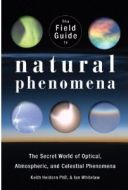
Field Guide to Natural Phenomena Am
Sky
In the sky you can atmospheric optics, weather and astronomical phenomena. Atmospheric optics includes rainbows, ice halos, mirages, rays, shadows, coronas and more. The ice halos comprise the area of atmospheric optics with the most diversity. Weather tends to happen to everybody so only a few of the rarer weather phenomena can be considered sightings e.g. tornadoes or hail. On the other hand you can learn to recognize the various types of clouds and snowflakes.
Astronomy
Astronomy in my opinion is the most interesting science to read about while birds being the best for the field. The number of books about astronomy is astonishing. So it is hard to determine what are the best resources for amateurs. It is recommended that you look yourself for the excellent astronomy books that are available. What you can get ranges from general field guides that cover most topics to rather specialized guides.
Here is a website that reviews astronomy books:
http://www.slivoski.com/astronomy/starbook/fie.htm
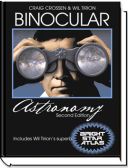 |
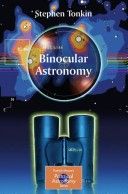 | 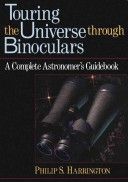 |
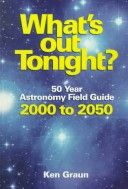 |
Binocular Astronomy (Patrick Moore's Practical Astronomy Series) GB
Touring the Universe Through Binoculars GB
Binoculars are an unappreciated tool for doing astronomy. But binoculars, which most naturalists already own, are quite portable, give eye-pleasing views and can easily give you many years of enjoyment before you exhaust the possible objects you can see with them. Using binoculars before purchasing a telescope can you decide if you really into the hobby of astronomy before you buy an expensive telescope.
What's Out Tonight : 50 Year Astronomy Field Guide 2000 to 2050 GB
Describes all the predicted astronomy events until 2050 such as eclipses, occulations and more.
Messier objects for binoculars A checklist of binocular messier objects divided into easy, tough and challenging objects.
Binocular Objects A constellation by constellation listing of objects visible in binoculars.
Atmospheric Optics
Atmospheric optics is phenomena that depends on light, water (in all forms) and other particles. Atmospheric optics covers phenomena such as rainbows, ice halos, sunsets, coronas, etc. Ice halos are the most interesting of atmospheric optics because many forms of ice halos are quite uncommon, even once in a lifetime events.
Atmospheric Optics This is the best website on the subject. It describes almost all the forms of atmospheric optics you can see and you can download software for ice halos from here.
Ice Crystal Halos A website where you can see some rather rare forms of ice halos that have been recently photographed around the world. The world first photograph of the Kern's Arc has recently been photographed.
List of Known Halos is a checklist of all the forms of ice halos that have been photographed. The website also includes a list of halos of undocumented halos that should or may exist in nature.
Observing halos offers two forms you can fill out -- one for common halos, and another for documenting a rare halo display.
FHON - Finnish Halo Observing Network.
An Introduction to Green Flashes More taked about in astronomical circles, this website pretty much covers everything known about green flashes. Green flashes are essentially green light that is seen at the very end of a sunset.
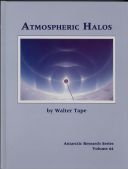 |
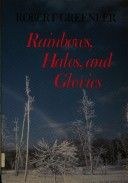 |
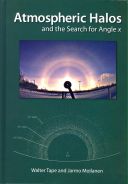 |
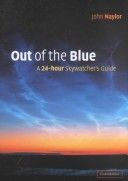 |
Atmospheric Halos GB
The must have for atmospheric optics fans.
Rainbows, Haloes, and Glories GB
The older bible on atmospheric optics. Less technical.
Atmospheric Halos and the Search for Angle X GB
The follow up to Atmospheric Halos. Combined they cover just about everything known about halos.
Out of the Blue - A 24-hour Skywatcher's guide GB
A naked eye guide to the sky covering both atmospheric optics and astronomy
Weather
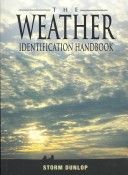 |
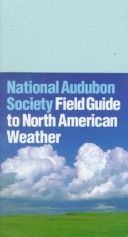 |
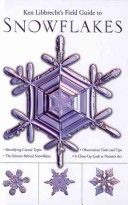 |
National Audubon Society Field Guide to North American Weather GB
Weather is so everyday what could a naturalist seek out? Clouds for one. Clouds are detailed in many weather books such as these two.
Ken Libbrecht's Field Guide to Snowflakes GB
Who would have thought a technical but beautiful field guide to snowflakes would be written? Well here it is. This book describes 21 different types of snowflakes you can look for. His website Snow Crystals.com has additional information and could be considered the portal on snowflakes.
Cloud Types The wikipedia entry on cloud types.
Natural Radio
Nature is good at hiding its secrets. Our five senses can only sense part of our environment. For example, our eyes can only see a small part of the electromagnetic spectrum, the visible part. Everything else -- x-rays, ultraviolet, infrared, radio etc is invisible to us. But if you tune into a radio, it converts a small part of the electromagnetic spectrum into sounds we can hear. What is on the radio except for music broadcasts and static? Sferics are the most common. These are pops and crackles caused by lightning you can hear on an AM during a thunderstorm. If the lightning interacts with the Earth's magnetic field it causes a sferic called a whistler which sounds much nicer. Even more beautiful is aurora chorus which is caused by the Northern Lights. Usually natural radio hobbyists listen to a special very low frequency radio that directly converts radio waves into sound waves of the same frequency. But potentially any part of the spectrum can be listened too and can be played out faster or slower than normal.
Natural Radio Lab The portal on natural radio. The best place to start.
Longwave Homepage
Aurora Chorus This website has tons of recordings, stories and information about natural radio.
Sferics: a beginner's guide to whistlers, tweeks, and other natural radio sounds and how to hear them. An old article in Whole Earth Review magazine also introduces natural radio:
FM Radio Astronomy. A different twist on natural radio. To do FM radio astronomy tune into a radio station that is just out of range. All you should hear is static and preferable you should use a directional antenna to tune out other channels. This out of range FM channel when then be able to bounce the signal of a meteor falling to the Earth so that you can hear it.
Natural Radio Lab Store Lists nine natural radio books out there.

Whistlers and Related Ionospheric Phenomena Am
Gets quite deep into the topic of whistlers and will be useful for classifying the various types of whisters heard (on low frequency radio) in the field.
Earth
Earth is the geology of the planet. The Earth is made up of minerals and rocks. Minerals have simple chemical formulas. Minerals are rarely found in large quantities. Over 4000 types of minerals are known. Rocks are composed of a mixture of minerals. Rocks make up the majority of the Earth's crust.
Gems are modified minerals or rocks. Rock or minerals can be cut and/or polished to produce a beautiful gem which can be used as a decorative item.
Some rocks come from outer space. These rocks are known as meteorites and are so rare that only a few specimens are known to come from Ontario. Meteorites come mostly from the asteroid belt but some have been documented as having come from the Moon or Mars.
The rock hound is likely to come across fossils as well. Fossils attest to the great diversity of life on Earth is ages past. Millions are types of fossils are known.
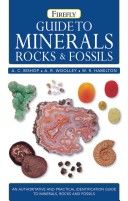 |
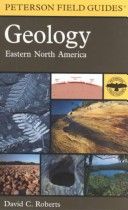 |
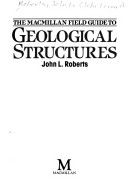 | 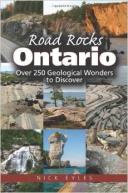 | 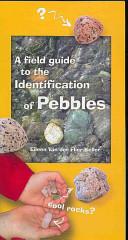 |
An excellent starter book.
Peterson's Geology Eastern North America GB
You can learn a little bit about our local geography with this book.
Macmillian Field Guide to Geological Structures GB
Information on various rock formations you can find.
Road Rocks Ontario: Over 250 Geological Wonders to Discover Am
A Field Guide to the Identification of Pebbles GB
Mineralogy Database A database of all known minerals.
Mineral ID_Key A key for identifying minerals. To use this key requires a kit and a bit of testing
Links for Mineralogists Hundreds of useful links for mineralogists
Wikipedia: Meteorites A useful starting point for meteorites.
The Fossil Record
Wikipedia: Fossils
Ontario Minerals
Landform Picture Index